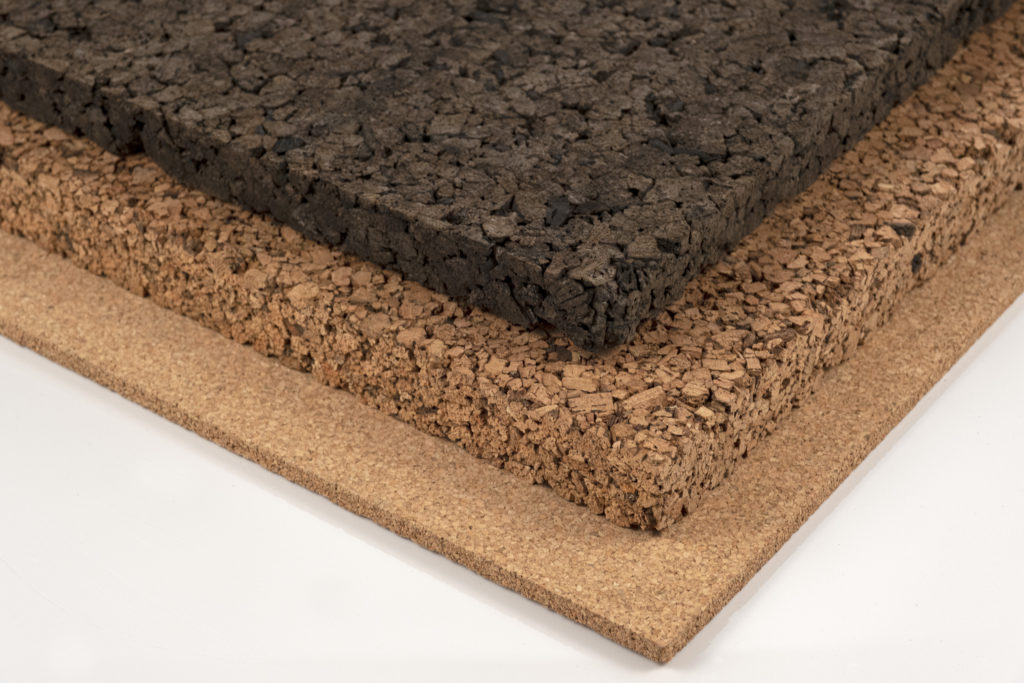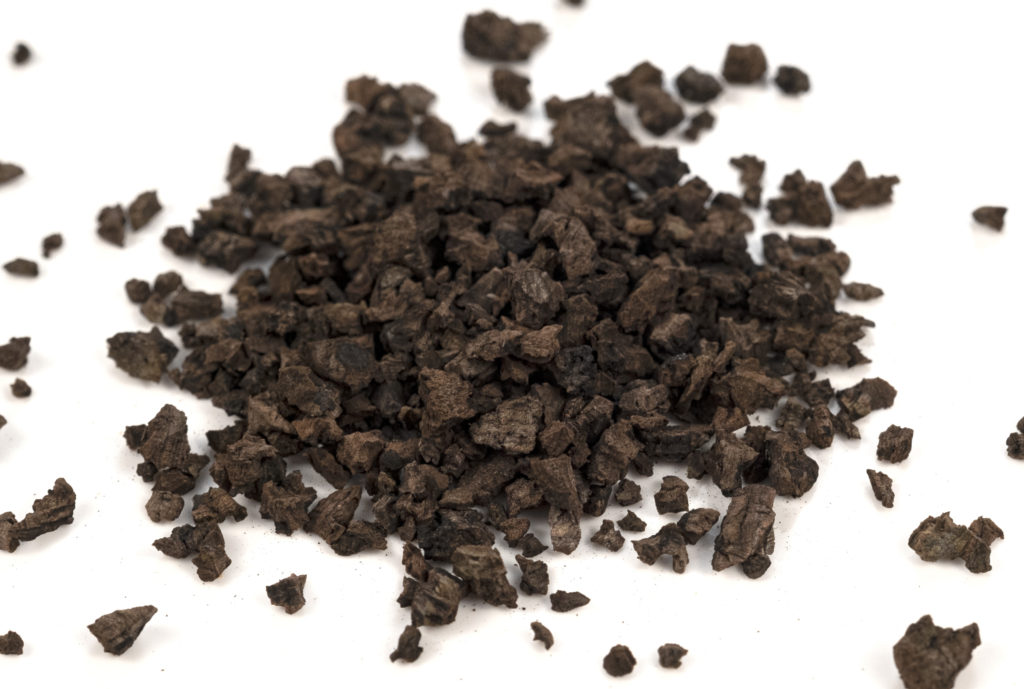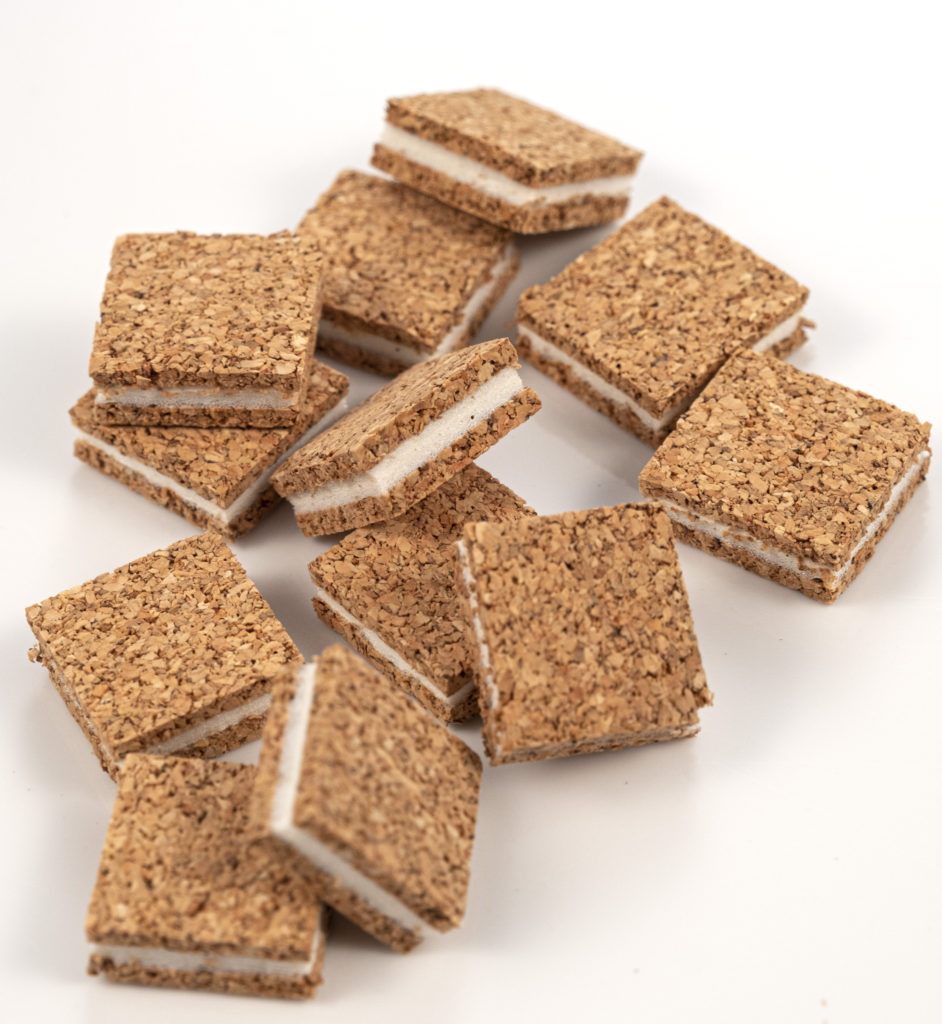CORK, A SUSTAINABLE MATERIAL FULL OF POSSIBILITIES
Myths and frequently asked questions
THE CORK
What is cork?
Cork is the outer bark of the cork oak (Quercus Suber L), an endemic tree of the Mediterranean basin that occupies more than two million hectares throughout the world. It is also the name by which the cork oak is known. The cork oak is a very long-lived tree and its productive life lasts between 150 and 200 years. Thanks to its regenerative capacity, the bark can be removed at intervals of between 9 and 14 years.
What is cork made of?
Cork is the outer bark of the cork oak. The outer cortex are dead plant cells in the shape of a pentagonal or hexagonal prism. The compounds in cork are, in order of relative importance, suberin (50% approx.), Lignin (20-25%), polysaccharides (cellulose and hemicellulose-20%), extractable substances, which mainly include lipid substances and phenolic (14-18%) and inorganic components (1-2%) (Silva et al. 2005; Pereira, 2007).
What are the main characteristics of cork?
Low density and lightness, impermeability, low heat transmission and good thermal insulation, acoustic insulation and low sound transmission, high resistance to movement or high coefficient of friction, damping capacity, compressibility, flexibility, elasticity, durability, rigidity, hygroscopic, biosorbent and natural. It’s recyclable and renewable.
Why do we say that cork is a paradigm of the bioeconomy and of the circular economy?
Cork oak forests represent a typical Mediterranean biome. The sustainable management of cork oak forests keeps the understory under control, reduces the amount of fuel, which reduces forest fires and prevents desertification phenomena, and stores CO2 from the atmosphere. The extraction or removal of the cork is totally respectful to the tree. In addition, the cork obtained can generate noble products such as the cork stopper and also a whole set of products that, thanks to the versatility of the material, can be used in sectors as diverse as construction or cosmetics.
Similarly, cork materials are natural and can even be used for a second time through recycling.
Similarly, cork materials are natural and can even be used for a second time through recycling.
What applications does cork have and can have?
Its most extensive and recognized application is the manufacture of wine and sparkling cork stoppers. However, we find cork in other industries such as construction, decoration, cosmetics, furniture, design, automotive, nautical and aerospace.
CORK OAK
What is a cork oak?
The cork oak (or Quercus Suber L) is a perennial tree of the Fagaceae family native to the Western Mediterranean. Its outer bark is cork, which has favoured the exploitation of cork oak forests.
How and where do cork oaks grow?
Cork oaks grow at an altitude between 0 and 800 meters above sea level and rarely appear at higher altitudes. They require a mild oceanic climate, with average annual rainfall between 600 and 1000 mm, with average annual temperatures around 15 ° C and a relative humidity between 65 and 80%.
Where can we find cork oaks in Catalonia?
In Catalonia, four fifths of the cork oak forests (80%) are concentrated in the region of Girona, especially in Baix Empordà, La Selva, Gironès and Alt Empordà. The rest are located in the Maresme and Vallès Oriental regions. We can find them by the sea and in mountainous environments of 800 meters. Worldwide, there are 2.1 million hectares of cork oak, which are found in Portugal, Spain, Algeria, Morocco, Italy, Tunisia and France.
How long does it last a cork oak productive life?
A cork oak productive life lasts between 170 and 250 years.
When is cork extracted from the tree?
In Catalonia, the first extraction is made when the tree is between 35 and 40 years old and it is not until the third extraction, when the so-called “reproduction cork” is lifted, that one-piece natural cork stoppers can be made. From here, the cork oak can be peeled between 10 and 15 times throughout its life. The first extraction “pelegrí” cork has other uses such as construction. The second extraction cork is called “matxot”.
What is “pelagrí” or first extraction cork?
The first harvested cork is called “pelagrí” and cannot be used to make stoppers.
What is the second extraction or “matxot”?
The cork bark that comes out after the first draw is called “matxot” and it is not suitable for the manufacture of natural cork stoppers. This cork can be used to make cork granulate and turn it into cork agglomerate.
What is reproduction cork?
Only the cork bark that results after the third shell, called reproduction cork, will be used to make stoppers. This extracted bark is uniform and has no cracks, so it is already suitable for making stoppers.
CORK STOPPER
Can all cork be used to make one-piece stoppers?
No, the cork to make natural stoppers must have an excellent quality and meet certain calibration requirements, so not everything that is extracted is valid to make this type of stoppers. In fact, it is estimated that only 30-35% of the cork that is extracted goes to make natural stoppers. The rest of quality cork, which is not the necessary size to make natural stoppers, is used to make discs for type 1 + 1 stoppers or for sparkling wines stoppers or is crushed to make agglomerated stoppers.
What types of cork stoppers can we find on the market?
There is a wide variety of stoppers ranging from natural stoppers to agglomerated stoppers with a natural cork disc, 1 + 1 stoppers, microagglomerated stoppers, “colmatados”, technical stoppers and caps with capsules among others.
What other uses does cork have?
Cork has multiple applications that go beyond the cork industry. It covers sectors such as construction, nautical, cosmetics, automobiles, the aerospace industry or design.
CURIOSITIES
Does cork appear in the Guinness World records?
Antonio Fontela and Rosa María Valdés entered the Guinness World in 2002 to have the largest cork stopper collection in the world , which at the time had 744 cork stoppers from 284 Asturian cider brands. Albanian artist Saimir Strati set a Guinness record in 2008 with the construction of the world’s measuring 7.1 meters high by 12.9 wide and containing 229,675 cork stoppers.
Did you know that cork is used in cinema special effects?
Cork is frequently used in film special effects scenes to simulate explosions, as its lightness makes it an optimal material for recreating particles projected in explosions.
Did you know that cork is one of the most important materials in a spaceship?
Thanks to its insulating properties, cork is an optimal material to withstand the high thermal load suffered by rockets or spacecraft when they are in space and enter the atmosphere.
Did you know that there are soccer fields where you play on cork?
Cork is a good alternative to the substitution of micro plastics in the grass of soccer fields, making the playing fields safer and more resistant. It is a positive initiative since, apart from being more sustainable, it allows the release of “bornizo” cork, recycled cork stoppers or other by-products of the cork industry. In addition, thanks to the high shock absorption of the material, impacts are reduced and protection towards the joints of athletes increases.
ACTIVITIES AND PUBLICATIONS
Is there a fair specializing in cork?
In Cassà de la Selva the Cork and Cork Stopper Fair is organized every spring, a thematic, sectorial event with international projection that for a weekend highlights the world of cork and its link with the province of Girona and Las Gavarres and especially the municipalities of Palafrugell and Cassà de la Selva. There are also other fairs in San Vicente de Alcántara (Extremadura) and in Coruche (Portugal).
Is there a chair related to cork?
Yes, the University of Girona, the Cork Museum of Catalonia and the City Council of Palafrugell have promoted the Chair of Cork Studies, which aims to promote multidisciplinary research, both in the humanities and social field and in the scientific and technical field about the world of cork. It includes everything from matter and culture to cork oaks and industries.
Where can I find innovative cork projects?
Catalan Cork Institute Foundation has drawn up the Ecodesign Catalog with cork which is constantly being updated and includes all those innovative projects that use cork as a material. On the ICSuro Foundation’s own website, you can check out completed or ongoing new projects around cork and their potential.


